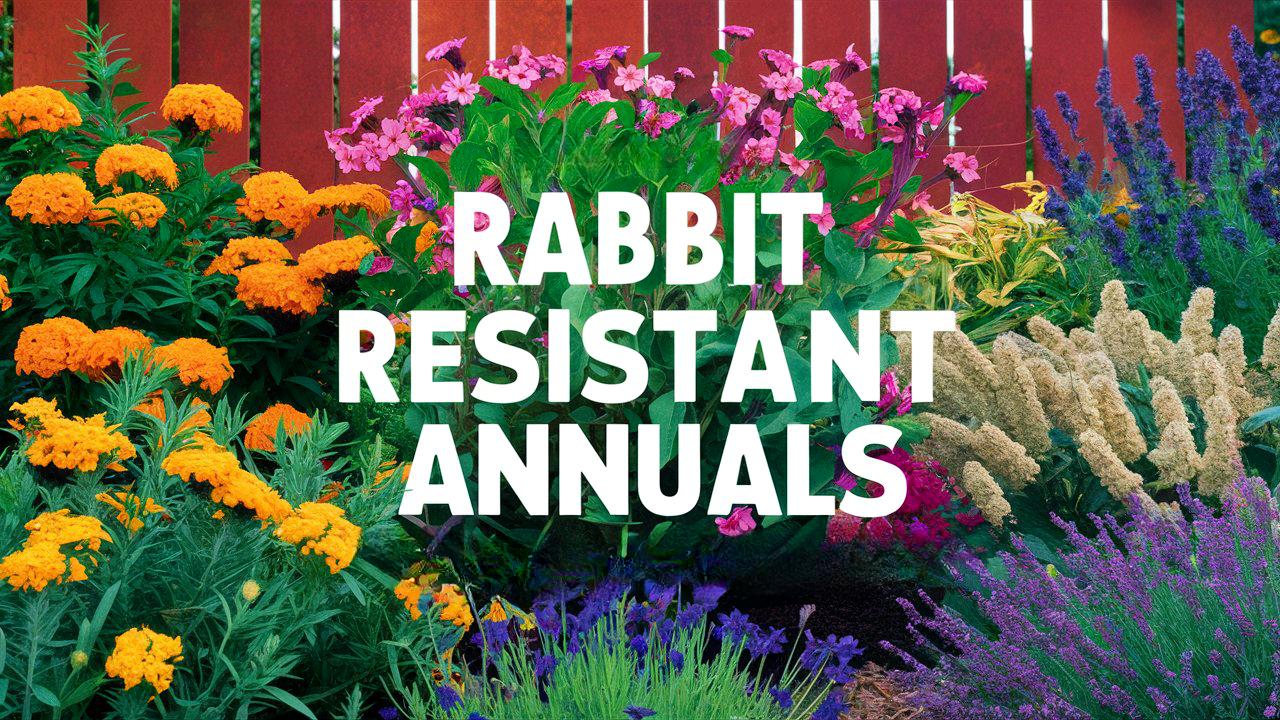Gardening can be a delightful way to cultivate beauty in your outdoor space, but having rabbits invade your carefully tended plants can be a frustrating hurdle for many gardeners. These adorable creatures often see our vibrant gardens as buffet tables, munching on delicate flowers and leafy greens alike. However, there’s a silver lining: several annuals are known to be rabbit resistant due to their taste, texture, or even scent.
In this guide, we’ll dig into various annual plants that are often overlooked by bunnies, ensuring that your garden remains lush and unscathed.
Ageratum

Ageratum, commonly known as floss flower, is a charming annual that is characterized by its fluffy, cotton-like clusters of blooms typically in hues of blue, purple, or white. This plant thrives in warm weather and prefers well-draining soil along with full sun to partial shade.
Rabbit resistance in ageratum is primarily due to its strong smell and fuzzy texture, which tend to deter furry herbivores. In addition to its resistance, ageratum is also a favorite among pollinators, drawing bees and butterflies to its vibrant flowers, thus promoting biodiversity in your garden.
Ageratum is relatively easy to cultivate. It can be direct seeded in the garden post-frost or started indoors a few weeks prior to the last frost date. This versatile plant naturally fills garden beds and borders with its beautiful mounds, making it a stunning addition to any landscape design.
Lantana

Lantana is a robust annual cherished for its vibrant clusters of flowers that can vary in color from yellow to pink, orange, purple, and red. This heat-loving plant attracts butterflies and other pollinators, making it a favored choice for wildlife gardens.
One of the reasons rabbits turn away from lantana is its pungent aroma combined with its slightly toxic characteristics. While the flowers are appealing to many beneficial insects, they are not palatable to rabbits, making them an ideal option for rabbit-infested areas.
This drought-tolerant plant thrives in full sun and well-drained soil, making it perfect for rock gardens and borders. Lantana can be pruned to maintain desired shapes and promote denser growth, which also enhances its resistance to pests. Remember, lantana can spread aggressively in some regions, so check local guidelines before planting!
Sweet Alyssum
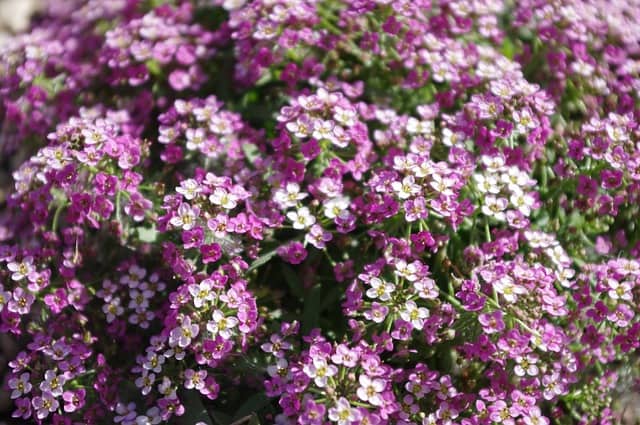
Sweet alyssum is an annual that enchants with its delicate, fragrant flowers that often come in shades of white, pink, or purple. Known for its sprawling habit, sweet alyssum creates a lush carpet of blooms, making it a perfect choice for ground cover or hanging baskets.
Rabbits tend to shy away from sweet alyssum due to its strong scent, which many gardeners find delightful. Additionally, sweet alyssum has a soft, furry foliage that some rabbits find unappealing to munch on.
This hardy annual can be sown directly into garden beds or containers, and it’s a cool-weather favorite, often producing blooms in early spring to fall. Sweet alyssum is also a great option for attracting beneficial insects, such as ladybugs and lacewings, which assist in pest control in your garden.
Cleome
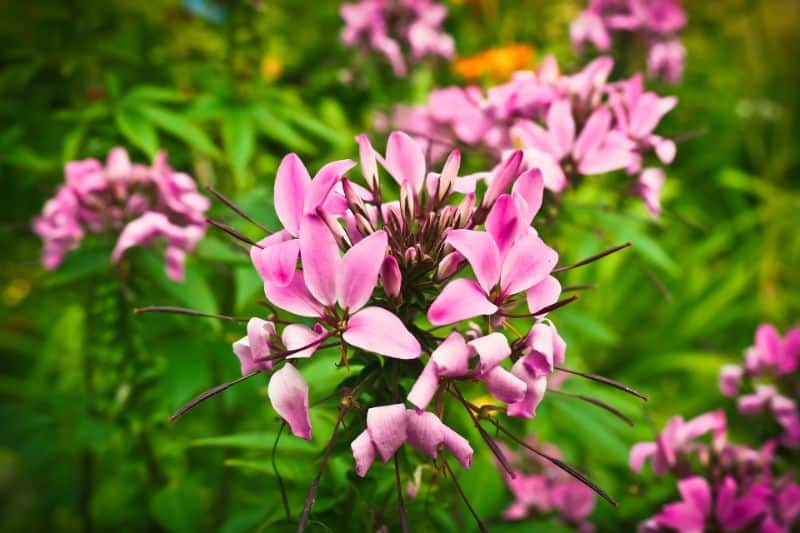
Cleome, often referred to as spider flower, is a unique annual that showcases tall, spiky clusters of flowers that can shockingly reach heights of over four feet. With its striking and unusual blooms, cleome can add vertical interest and height to garden beds.
The reason rabbits generally avoid cleome is due to its distinctive night-blooming nature. The sticky, spiny foliage along with its pungent scent makes it less appealing. Additionally, cleome is known for its vigor in the garden, often reseeding itself for the next growing season; this hardiness contributes to its appeal as a staple in rabbit-resistant gardens.
Cleome thrives in full sun and can tolerate poor soil conditions, making it suitable for a wide range of landscapes. It requires minimal maintenance, so gardeners can enjoy its uniqueness without much effort. The tall blooms also attract hummingbirds and other pollinators, enhancing both beauty and ecological health around your home.
Marigold
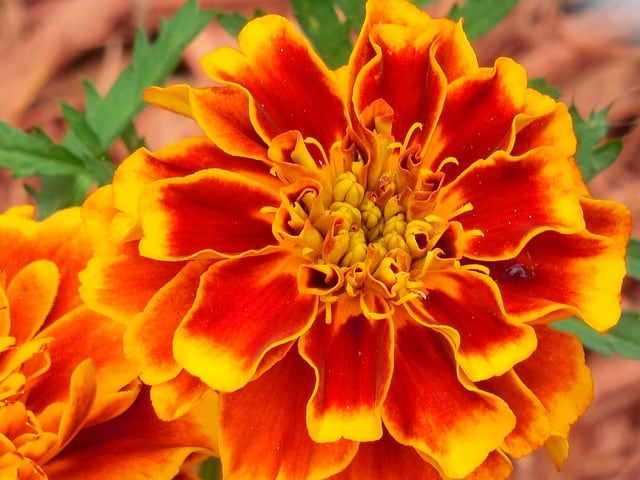
Marigolds are undoubtedly one of the most recognizable and beloved annual flowers, often praised for their vibrant golden-yellow hues. These hardy plants not only provide bright color to any garden scheme but are also heralded for their pest-repelling properties.
Rabbits typically avoid marigolds due to their strong scent and bitter taste. Many gardeners plant marigolds as a natural pesticide, as they are known to repel nematodes and other garden pests. The rich, densely packed blooms coupled with their sturdy foliage make marigolds a reliable choice for any garden.
Marigolds are versatile, easily grown from seeds either directly sown in the ground or started indoors. They thrive in full sun and are adaptable to a variety of soil conditions. Incorporating marigolds into your flower beds can also benefit neighboring plants by deterring harmful insects and attracting beneficial ones.
Geraniums
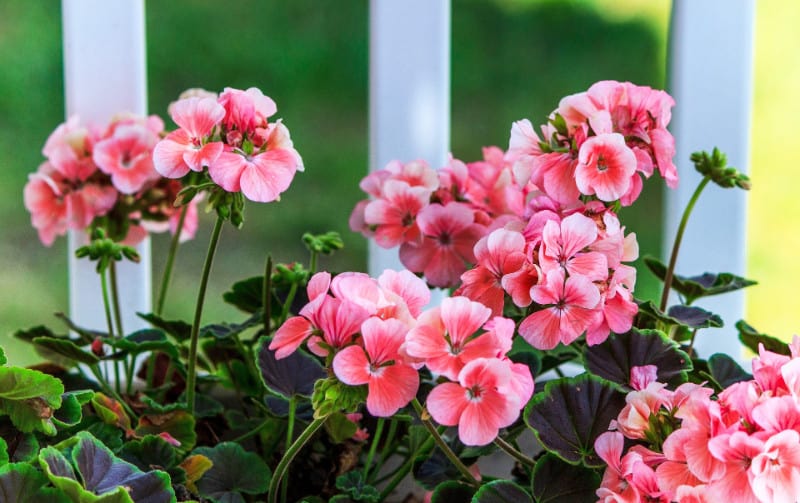
Geraniums, or pelargoniums, are not only established garden favorites, but they also provide a broad palette of colors, including reds, pinks, purples, and whites. Known for their lush foliage and long-lasting blooms, geraniums are a staple in pots, hanging baskets, and garden beds alike.
Rabbits usually veer away from geraniums due to their slightly hairy leaves and potent scent. Additionally, many cultivars of geraniums develop a somewhat resinous foliage that bunnies find unappetizing. The plant’s ability to thrive in various conditions and its resilience make it an incredibly practical choice for gardeners battling pests.
Geraniums flourish in full sun and well-drained soil, and their low-maintenance nature makes them an even more appealing choice. They prefer moderate watering; over-watering may lead to root rot. In addition, geraniums are usually excellent for container gardening, ensuring that even smaller spaces can benefit from their beauty without being a feast for rabbits.
Wax Begonia
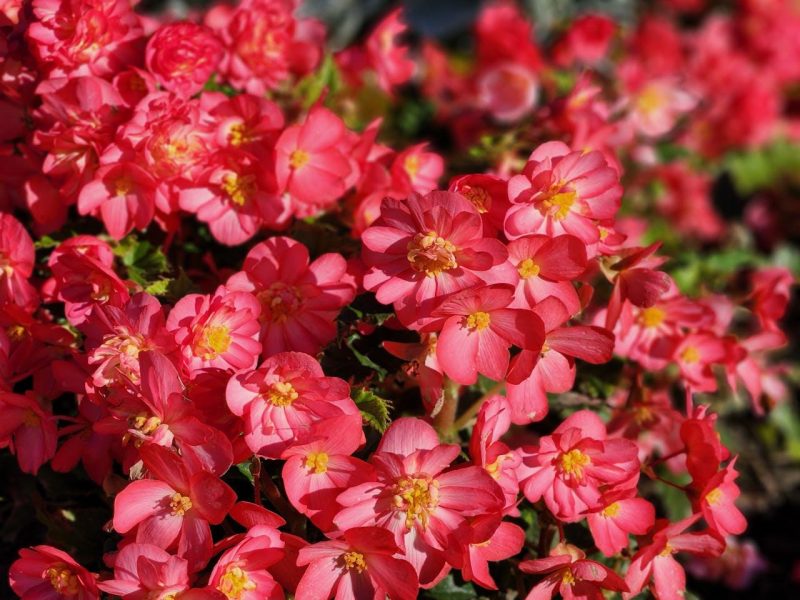
Wax begonias are a wonderfully vibrant and robust option for any gardener looking to create a colorful display without the worry of rabbit infestations. Their waxy, thick leaves and numerous vibrant flower heads make them a favorite for both annual and perennial garden designs.
Rabbits tend to avoid wax begonias primarily due to their thick, waxy leaves and slightly bitter taste. The shiny quality of the leaves may deter these creatures from selecting them as a meal. Wax begonias are also resilient in partial shade, making them suitable for a wider variety of gardening situations.
These charming plants require well-draining soil and appreciate regular watering but can adapt to varying moisture levels. Wax begonias can add vibrant color from spring until frost, and they are known for their ability to bloom continuously. With their charming appearance and rabbit resistance, they make an excellent addition to any garden or landscape setup.
Strawflower
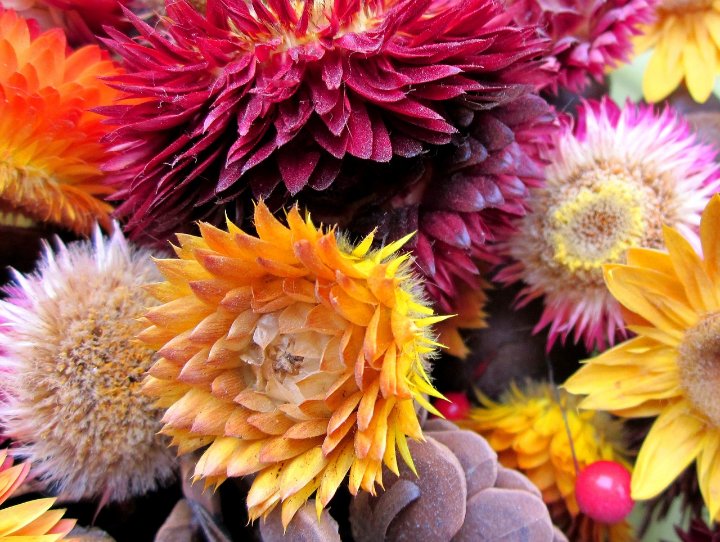
Strawflowers, also known as everlasting flowers, stand out for their unique, papery blooms that come in a range of colors, including yellow, pink, orange, and red. This hardy annual not only provides striking aesthetics but is also highly valued for its use in dried flower arrangements.
The reason rabbits generally avoid strawflowers can be attributed to their tough, coarse foliage and unique texture, which do not appeal to their diets. In addition to being rabbit-resistant, strawflowers are also drought tolerant and thrive in sunny areas with well-drained soil.
These vibrant blooms are perfect for adding a contrast of color and texture to your garden throughout the summer months. Strawflowers prefer to be sown directly in the garden or grown from seed indoors. Their longevity and sturdy structure are excellent for utilizing in various floral arrangements, offering utility alongside that visual appeal.
Vinca
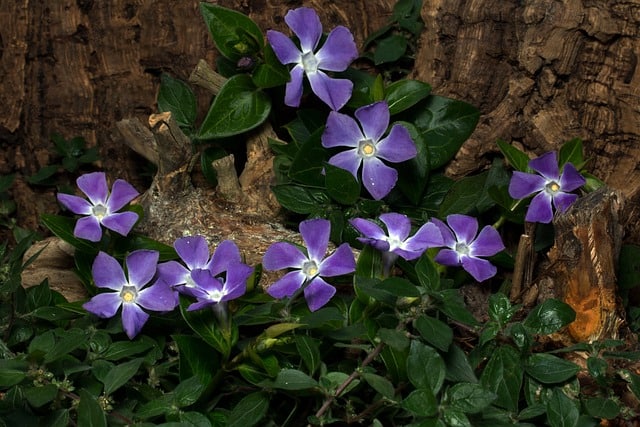
Vinca, also known as periwinkle or Madagascar periwinkle, offers beautiful, star-shaped flowers in a variety of colors such as pink, white, and lavender. This hardy annual is adaptable to a wide range of growing conditions, including poor soil and drought.
Rabbits generally distance themselves from vinca due to its slightly toxic properties. Ingesting vinca can cause gastrointestinal discomfort in rabbits, making it an undesired food choice. Vinca is also known for its sturdy, glossy foliage, which adds to its rabbit repellent qualities.
Vinca thrives in full sun and prefers well-draining soil but can tolerate some shade. This low-maintenance plant produces an abundance of flowers, providing continuous beauty throughout the growing season. With its spreading habit, vinca is perfect for filling in gaps in flower beds or for use in borders and pathways.
Snapdragon
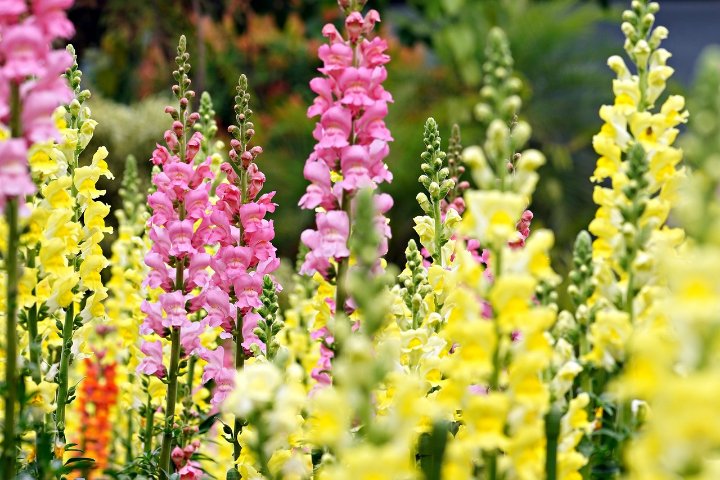
Snapdragons are fascinating annuals that are instantly recognizable due to their unique, charming flower shape that resembles a dragon’s mouth. Available in a splendid range of colors, they introduce vibrant vertical elements to any garden.
Rabbits tend to avoid snapdragons primarily because of their thick stems and slight bitterness, combined with a generally low palatability. Additionally, snapdragons are known for producing compounds in their leaves that are mildly toxic to pets and wildlife, further deterring rabbits from making a meal of them.
These delightful flowers thrive in cool weather and can be directly sown in the garden or started indoors. They love full sun exposure and well-drained soil. Snapdragons can also contribute to the aesthetic value of gardens by serving as a backdrop to other more edible plants, creating an engaging contrast.
Poppy
 Poppy flowers, often associated with remembrance and beauty, create stunning splashes of color in gardens with their unforgettable, delicate blooms. These annuals are available in various varieties, offering bright hues like red, orange, and purple.
Poppy flowers, often associated with remembrance and beauty, create stunning splashes of color in gardens with their unforgettable, delicate blooms. These annuals are available in various varieties, offering bright hues like red, orange, and purple.
Rabbits naturally avoid poppies due to their mildly toxic nature, as their significant alkaloid content can be off-putting to many animals. While the flowers are celebrated for their beauty, this aspect makes them a great choice for gardeners concerned about undesired visitors.
Poppies thrive in full sun and well-draining soil, preferring cool weather for optimal growth. They are often direct seeded into the garden and can bring much-needed nectar to bees and butterflies, contributing to a healthy ecosystem. Their ephemeral nature and stunning visual appeal make poppies a cherished addition to any garden.
Sunflower
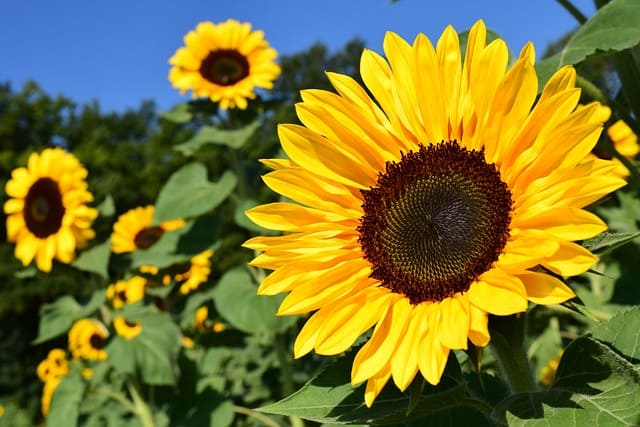
Sunflowers are arguably one of the most iconic blossoms, beloved for their towering stature and bright, cheerful faces that turn to follow the sun. These annuals not only brighten landscapes but also provide seeds for birds and humans alike.
Though rabbits may nibble on young seedlings, once established, mature sunflowers are generally avoided due to their tall height and coarse leaves. With proper care, sunflowers can serve as robust barriers, attracting beneficial insects and pollinators while deterring unwelcome furry visitors.
Sunflowers thrive in full sun and prefer well-drained, fertile soil. They are also known for their ability to improve soil health due to their deep taproots. Additionally, sunflower heads can provide food for various bird species, enhancing your garden’s ecosystem further.
Salvia
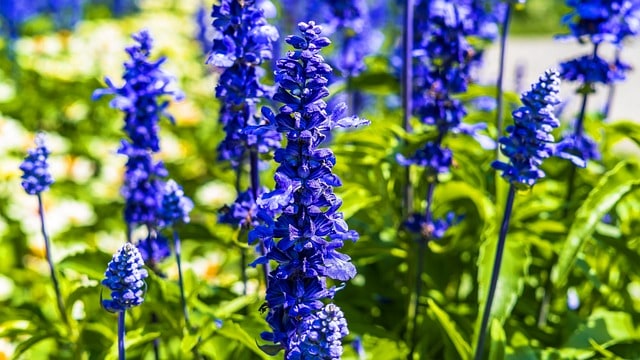
Salvia, commonly referred to as sage, consists of many attractive annual varieties. Their clustered spikes of flowers, which may be blue, purple, pink, or red, create a beautiful contrast when planted among other annuals. Salvia is not only visually appealing but is also a favorite amongst pollinators, including hummingbirds and butterflies.
Rabbits tend to avoid salvia due to its intense aroma and bitter leaves, which many animals naturally dislike. Additionally, salvia is known for its drought resistance, making it an excellent choice for low-maintenance gardens.
These hardy plants prefer well-drained soil and full sun exposure. Salvia can be direct seeded or started indoors, often producing blooms throughout the summer. Their ability to thrive in a range of soil conditions, combined with their mesmerizing blooms and aromatic foliage, makes salvia a must-have for any rabbit-resistant garden palette.
Conclusion
Finding plants that thrive in your garden while also keeping rabbits at bay doesn’t have to be a daunting task. The unique qualities of the annuals mentioned above make them excellent choices for gardeners looking to maintain a beautiful and flourishing landscape without the worry of rabbits intruding. By selecting these rabbit-resistant annuals, you can effectively cultivate a garden filled with vibrant colors and textures, while also supporting local biodiversity by attracting beneficial pollinators.


